A Comparison Study on Toughening Vinyl Ester Resins Using Different Nanocarbon Materials
Abstract
:1. Introduction
2. Materials and Methods
2.1. Materials
2.2. Preparation of Nanocarbon/Vinyl Ester Resin Composites
2.3. Characterization
3. Results
3.1. Dispersion of Nanocarbon Fillers
3.2. Viscosity
3.3. Mechanical Properties
3.4. Dynamic Mechanical Analysis
4. Conclusions
Author Contributions
Funding
Institutional Review Board Statement
Data Availability Statement
Acknowledgments
Conflicts of Interest
References
- Yadav, S.K.; Schmalbach, K.M.; Kinaci, E.; Stanzione, J.F.; Palmese, G.R. Recent advances in plant-based vinyl ester resins and reactive diluents. Eur. Polym. J. 2018, 98, 199–215. [Google Scholar] [CrossRef]
- Ziaee, S.; Palmese, G.R. Effects of temperature on cure kinetics and mechanical properties of vinyl-ester resins. Abstr. Pap. Am. Chem. S 1999, 218, U439. [Google Scholar] [CrossRef]
- Paczkowski, P.; Puszka, A.; Gawdzik, B. Investigation of Degradation of Composites Based on Unsaturated Polyester Resin and Vinyl Ester Resin. Materials 2022, 15, 1286. [Google Scholar] [CrossRef] [PubMed]
- Pham, S.; Burchill, P.J. Toughening of Vinyl Ester Resins with Modified Polybutadienes. Polymer 1995, 36, 3279–3285. [Google Scholar] [CrossRef]
- Ji, S.G.; Drzal, L.T.; Cho, D. Chemical modification of exfoliated graphite nanoplatelets with CTBN rubber and highly enhanced impact strength of vinyl ester resin by them. J. Ind. Eng. Chem. 2021, 102, 293–301. [Google Scholar] [CrossRef]
- Robinette, E.J.; Ziaee, S.; Palmese, G.R. Toughening of vinyl ester resin using butadiene-acrylonitrile rubber modifiers. Polymer 2004, 45, 6143–6154. [Google Scholar] [CrossRef]
- He, S.Y.; Qian, Y.Q.; Liu, K.W.; Macosko, C.W.; Stein, A. Effects of Inorganic Fillers on Toughening of Vinyl Ester Resins by Modified Graphene Oxide. Ind. Eng. Chem. Res. 2018, 57, 4592–4599. [Google Scholar] [CrossRef]
- Ullett, J.S.; Chartoff, R.P. Toughening of Unsaturated Polyester and Vinyl Ester Resins with Liquid Rubbers. Polym. Eng. Sci. 1995, 35, 1086–1097. [Google Scholar] [CrossRef]
- Duan, K.; Li, L.; Wang, F.; Liu, S.H.; Hu, Y.J.; Wang, X.L. New insights into interface interactions of CNT-reinforced epoxy nanocomposites. Compos. Sci. Technol. 2021, 204, 108638. [Google Scholar] [CrossRef]
- Upadhyay, A.K.; Goyat, M.S.; Kumar, A. A review on the effect of oxide nanoparticles, carbon nanotubes, and their hybrid structure on the toughening of epoxy nanocomposites. J. Mater. Sci. 2022, 57, 13202–13232. [Google Scholar] [CrossRef]
- Palmeri, M.J.; Putz, K.W.; Brinson, L.C. Sacrificial Bonds in Stacked-Cup Carbon Nanofibers: Biomimetic Toughening Mechanisms for Composite Systems. ACS Nano 2010, 4, 4256–4264. [Google Scholar] [CrossRef] [PubMed]
- Liu, W.S.; Kong, J.H.; Toh, W.E.; Zhou, R.; Ding, G.Q.; Huang, S.; Dong, Y.L.; Lu, X.H. Toughening of epoxies by covalently anchoring triazole-functionalized stacked-cup carbon nanofibers. Compos. Sci. Technol. 2013, 85, 1–9. [Google Scholar] [CrossRef]
- Kumar, A.; Sharma, K.; Dixit, A.R. A review on the mechanical properties of polymer composites reinforced by carbon nanotubes and graphene. Carbon Lett. 2021, 31, 149–165. [Google Scholar] [CrossRef]
- Zaman, I.; Kuan, H.C.; Meng, Q.S.; Michelmore, A.; Kawashima, N.; Pitt, T.; Zhang, L.Q.; Gouda, S.; Luong, L.; Ma, J. A Facile Approach to Chemically Modified Graphene and its Polymer Nanocomposites. Adv. Funct. Mater. 2012, 22, 2735–2743. [Google Scholar] [CrossRef]
- Zafeiropoulou, K.; Kostagiannakopoulou, C.; Geitona, A.; Tsilimigkra, X.; Sotiriadis, G.; Kostopoulos, V. On the Multi-Functional Behavior of Graphene-Based Nano-Reinforced Polymers. Materials 2021, 14, 5828. [Google Scholar] [CrossRef]
- Wei, Y.; Hu, X.Y.; Jiang, Q.R.; Sun, Z.Y.; Wang, P.F.; Qiu, Y.P.; Liu, W.S. Influence of graphene oxide with different oxidation levels on the properties of epoxy composites. Compos. Sci. Technol. 2018, 161, 74–84. [Google Scholar] [CrossRef]
- Bortz, D.R.; Heras, E.G.; Martin-Gullon, I. Impressive Fatigue Life and Fracture Toughness Improvements in Graphene Oxide/Epoxy Composites. Macromolecules 2012, 45, 238–245. [Google Scholar] [CrossRef]
- Shchegolkov, A.V.; Shchegolkov, A. Synthesis of Carbon Nanotubes Using Microwave Radiation: Technology, Properties, and Structure. Russ. J. Gen. Chem. 2022, 92, 1168–1172. [Google Scholar] [CrossRef]
- Domun, N.; Hadavinia, H.; Zhang, T.; Sainsbury, T.; Liaghat, G.H.; Vahid, S. Improving the fracture toughness and the strength of epoxy using nanomaterials—A review of the current status. Nanoscale 2015, 7, 10294–10329. [Google Scholar] [CrossRef]
- Gojny, F.H.; Wichmann, M.H.G.; Fiedler, B.; Schulte, K. Influence of different carbon nanotubes on the mechanical properties of epoxy matrix composites—A comparative study. Compos. Sci. Technol. 2005, 65, 2300–2313. [Google Scholar] [CrossRef]
- ASTM D790-17; Standard Test Methods for Flexural Properties of Unreinforced and Reinforced Plastics and Electrical Insulating Materials. ASTM: West Conshohocken, PN, USA, 2017.
- ASTM D5045-14(2022); Standard Test Methods for Plane-Strain Fracture Toughness and Strain Energy Release Rate of Plastic Materials. ASTM: West Conshohocken, PN, USA, 2022.
- Rafiee, M.A.; Rafiee, J.; Wang, Z.; Song, H.H.; Yu, Z.Z.; Koratkar, N. Enhanced Mechanical Properties of Nanocomposites at Low Graphene Content. Acs Nano 2009, 3, 3884–3890. [Google Scholar] [CrossRef] [PubMed]
- Chandrasekaran, S.; Sato, N.; Tolle, F.; Mulhaupt, R.; Fiedler, B.; Schulte, K. Fracture toughness and failure mechanism of graphene based epoxy composites. Compos. Sci. Technol. 2014, 97, 90–99. [Google Scholar] [CrossRef]
- Wetzel, B.; Rosso, P.; Haupert, F.; Friedrich, K. Epoxy nanocomposites—Fracture and toughening mechanisms. Eng. Fract. Mech. 2006, 73, 2375–2398. [Google Scholar] [CrossRef]
- Johnsen, B.B.; Kinloch, A.J.; Mohammed, R.D.; Taylor, A.C.; Sprenger, S. Toughening mechanisms of nanoparticle-modified epoxy polymers. Polymer 2007, 48, 530–541. [Google Scholar] [CrossRef]
- Poonpipat, Y.; Leelachai, K.; Pearson, R.A.; Dittanet, P. Fracture behavior of silica nanoparticles reinforced rubber/epoxy composite. J. Reinf. Plast. Compos. 2017, 36, 1156–1167. [Google Scholar] [CrossRef]
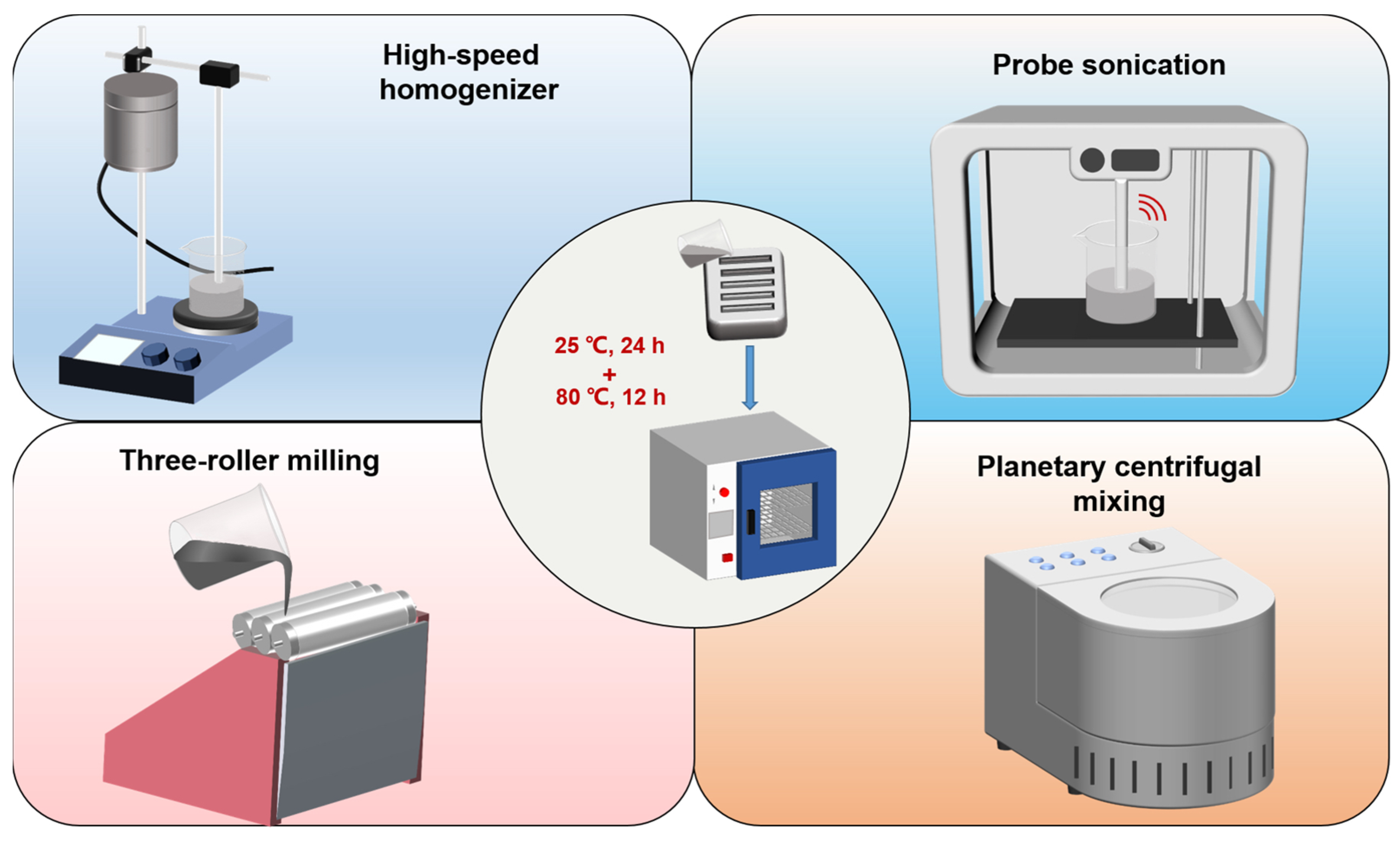
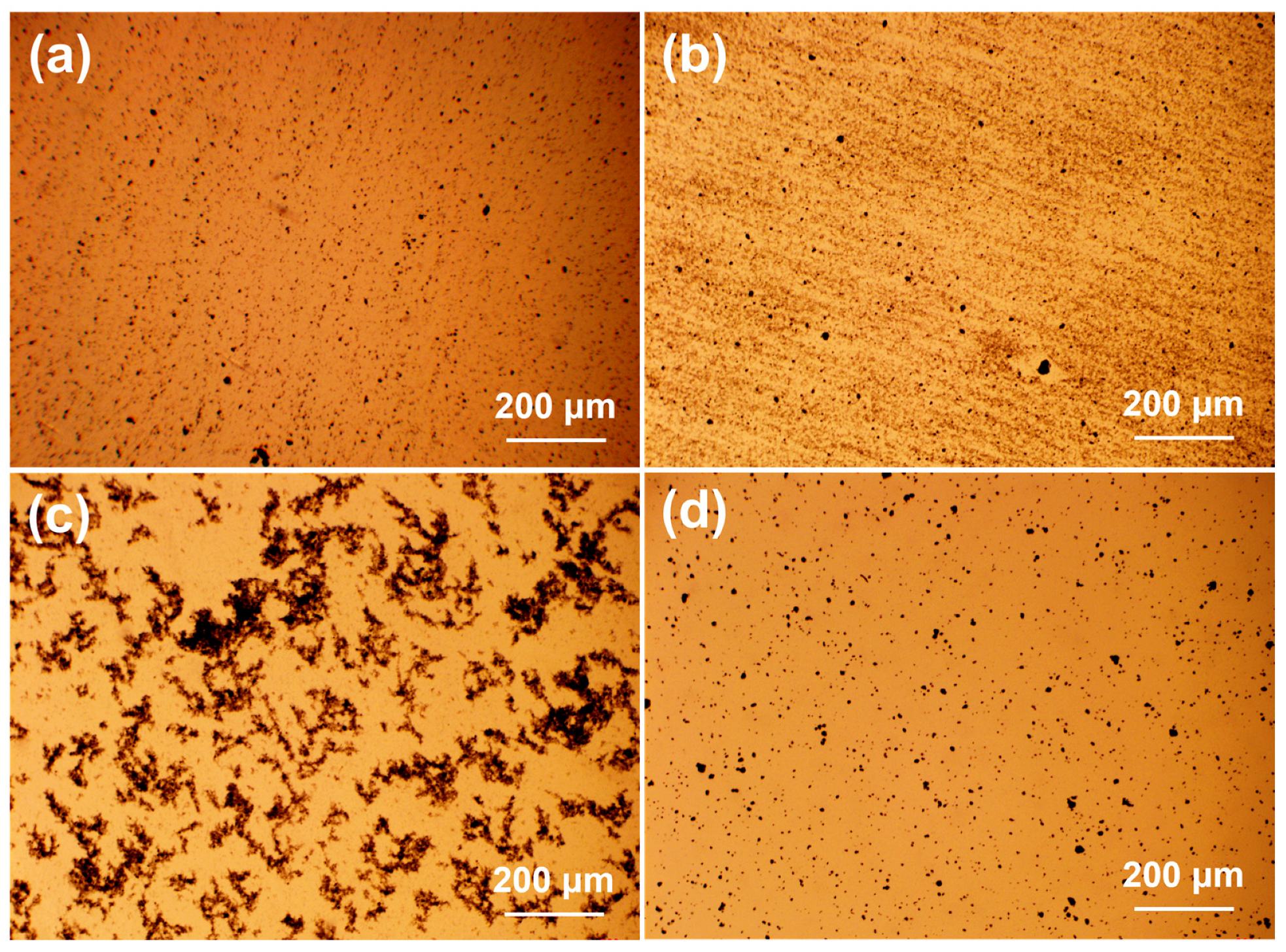
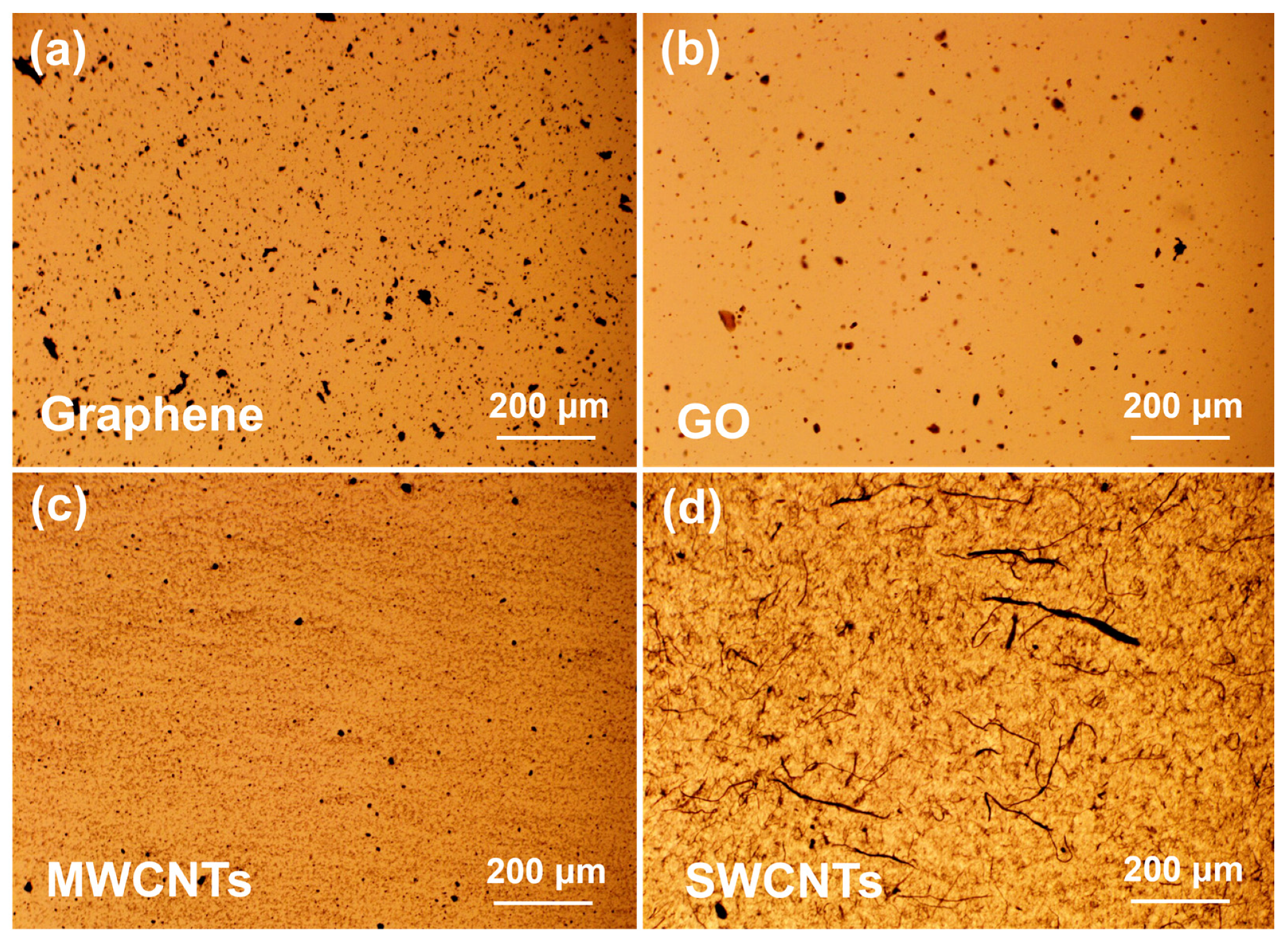
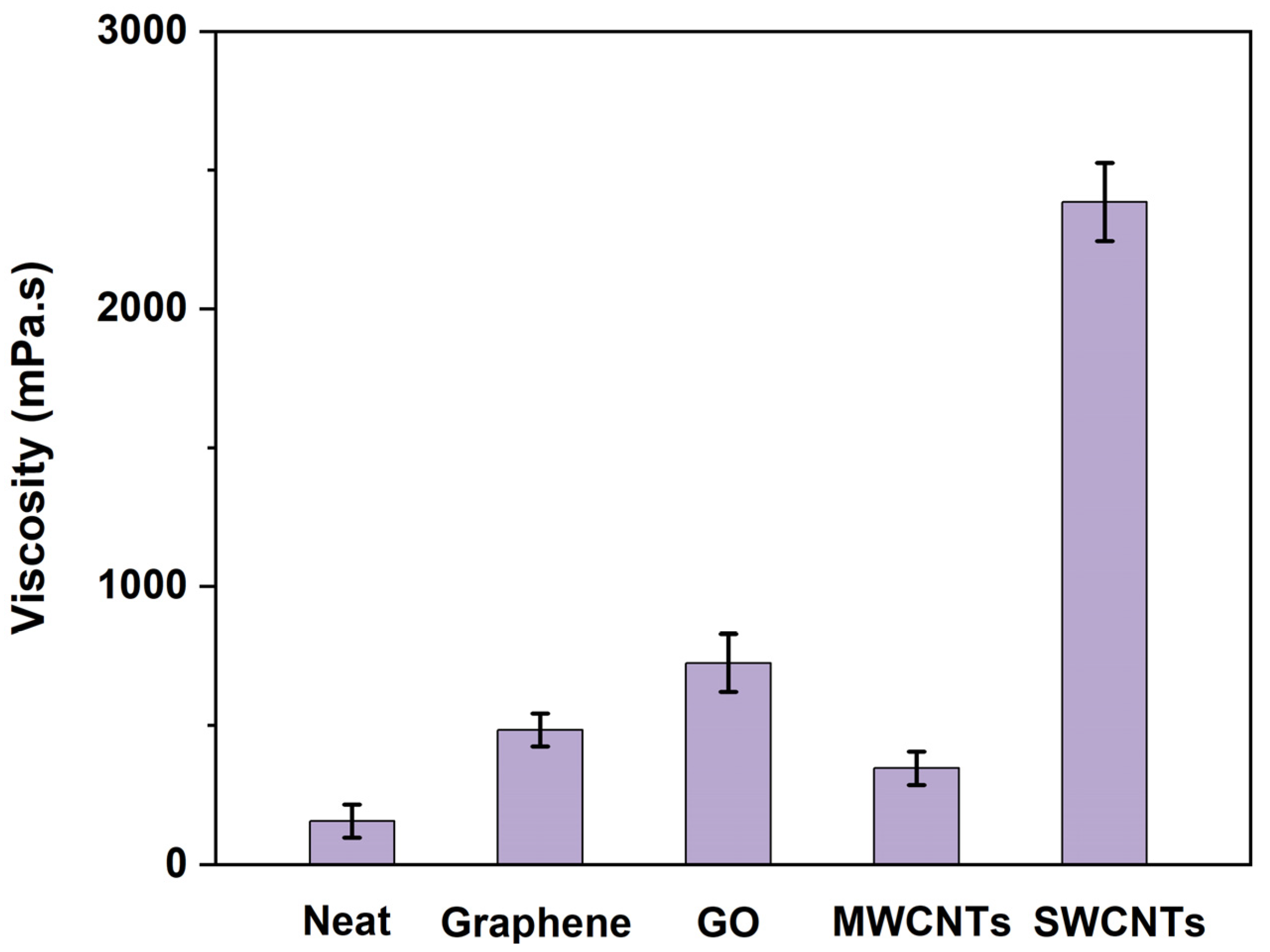

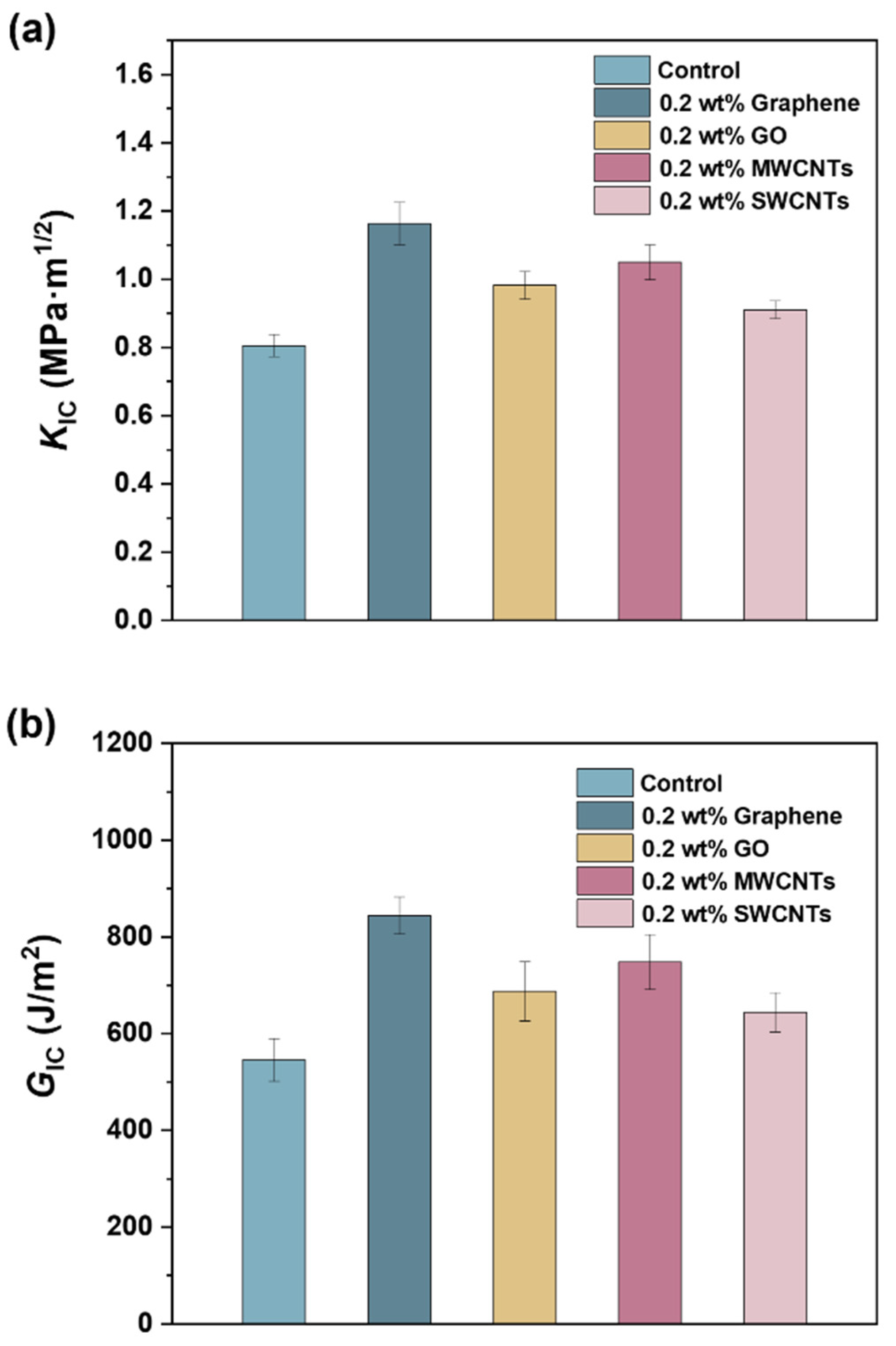

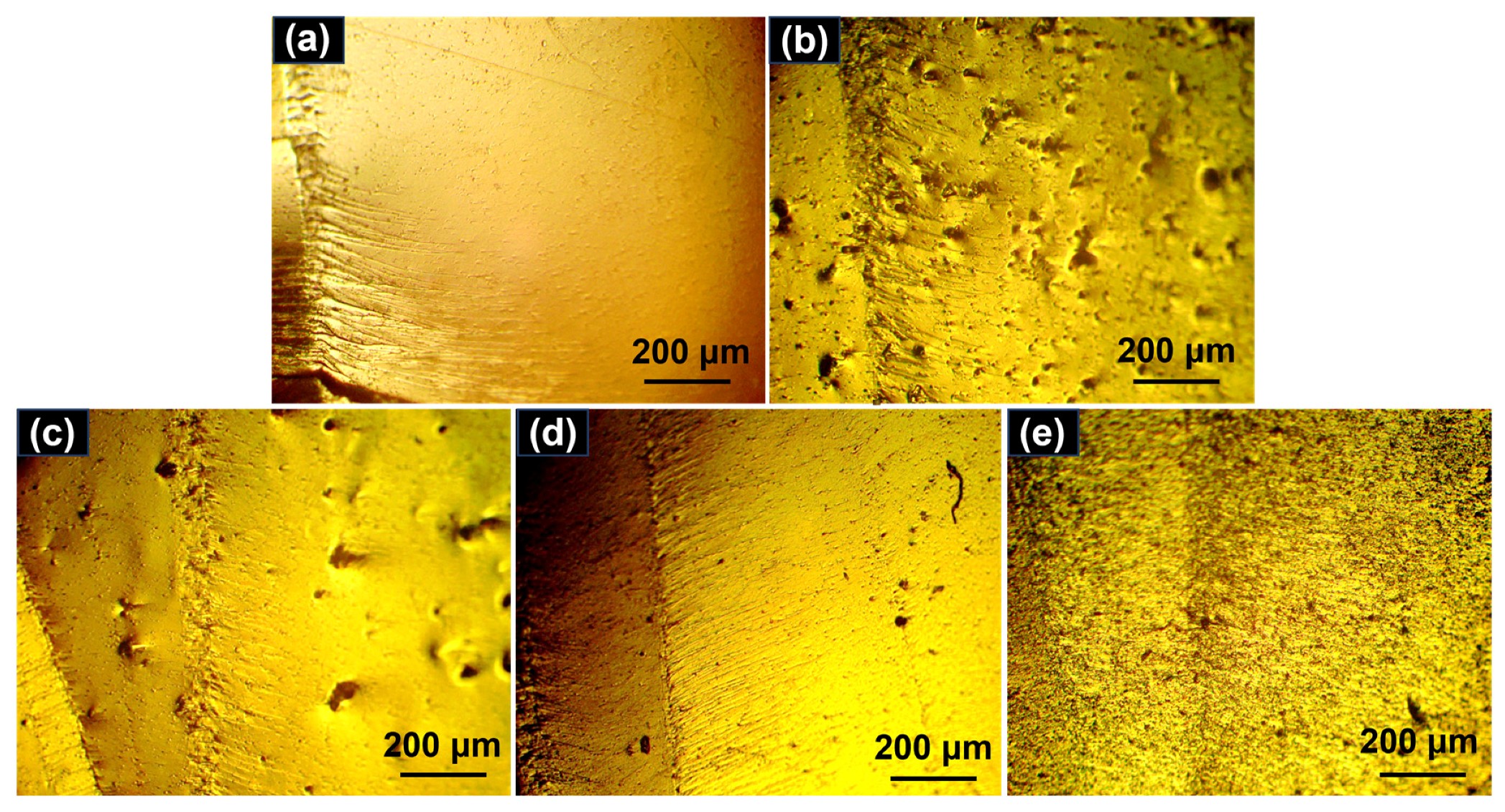
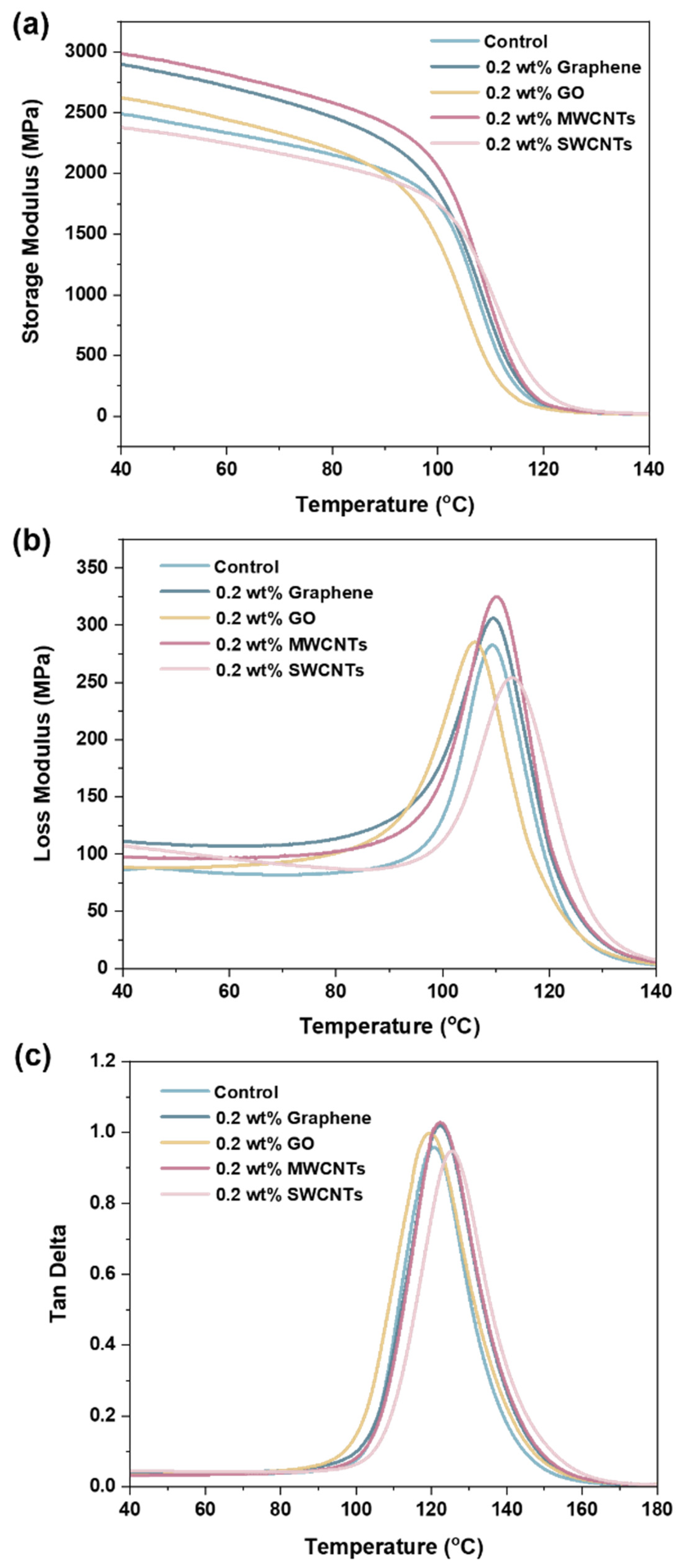
| Sample | Storage Modulus (MPa) | Maximum Loss Modulus (MPa) | Tg (°C) |
|---|---|---|---|
| Control | 2490 | 283 | 121 |
| Graphene | 2898 | 307 | 122 |
| GO | 2624 | 285 | 120 |
| MWCNTs | 2986 | 325 | 122 |
| SWCNTs | 2381 | 253 | 125 |
Disclaimer/Publisher’s Note: The statements, opinions and data contained in all publications are solely those of the individual author(s) and contributor(s) and not of MDPI and/or the editor(s). MDPI and/or the editor(s) disclaim responsibility for any injury to people or property resulting from any ideas, methods, instructions or products referred to in the content. |
© 2023 by the authors. Licensee MDPI, Basel, Switzerland. This article is an open access article distributed under the terms and conditions of the Creative Commons Attribution (CC BY) license (https://creativecommons.org/licenses/by/4.0/).
Share and Cite
Yang, R.; Wang, Y.; Ran, X.; Liu, W. A Comparison Study on Toughening Vinyl Ester Resins Using Different Nanocarbon Materials. Polymers 2023, 15, 4536. https://doi.org/10.3390/polym15234536
Yang R, Wang Y, Ran X, Liu W. A Comparison Study on Toughening Vinyl Ester Resins Using Different Nanocarbon Materials. Polymers. 2023; 15(23):4536. https://doi.org/10.3390/polym15234536
Chicago/Turabian StyleYang, Ruirui, Yating Wang, Xiaolu Ran, and Wanshuang Liu. 2023. "A Comparison Study on Toughening Vinyl Ester Resins Using Different Nanocarbon Materials" Polymers 15, no. 23: 4536. https://doi.org/10.3390/polym15234536
APA StyleYang, R., Wang, Y., Ran, X., & Liu, W. (2023). A Comparison Study on Toughening Vinyl Ester Resins Using Different Nanocarbon Materials. Polymers, 15(23), 4536. https://doi.org/10.3390/polym15234536







